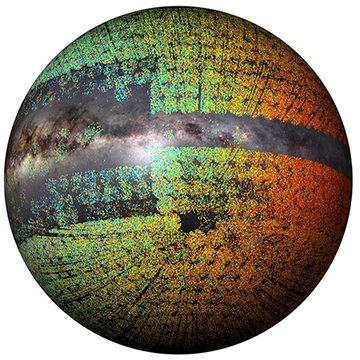Milky Way and the Local Volume

Galaxies are complex systems made of stars, gas, dust, and other components (such as mysterious “Dark Matter”). The “Milky Way and the Local Volume” research section studies the Milky Way galaxy and nearby analogous systems.
The study of the Milky Way is of prime importance, it is the only galaxy we can fully map in its three space dimensions (3D) as well as measuring all velocity components for full 6D phase-space measurements. The largest spectroscopic and astrometric surveys of the Milky Way are helping us to understand the structure and formation history of the Milky Way. Extensive imaging surveys of nearby disk galaxies allow us to resolve their stellar outskirts and to deduce their stellar accretion history. These observations are analysed with the latest chemical evolution models of the Milky Way, with dynamic models of galaxies of all sizes, and with models of galaxy formation in full cosmological context. Even though the Milky Way and other galaxies of study are near enough to be investigated in great detail ("star-by-star"), understanding the formation of galactic systems as a whole, not just their individual elements, remains the goal.